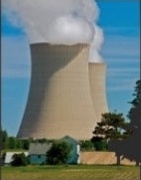By Candyce Paul
Sam Kerson first approached us nearly a decade ago offering to share some linocut prints with us. At that time we, the Committee for Future Generations, were embattled by the Nuclear Waste Management Organization. We are the Poplar/Aspen Tree Home Dene (English River First Nation). The Nuclear waste management Organization was soliciting us to allow them to build a nuclear waste dump on our traditional territory.
Our Committee for Future Generations was in a campaign to raise awareness across Saskatchewan, Canada, and the world about the serious risks we were facing. We had walked and talked, and used social media, camped and gathered, and brought in experts. Our idea was to show the people that we were struggling against the industrial military complex. Our very DNA was on the line. We stood to protect the next 7000 Generations of all living things.
[…]
Uranium mining began in Saskatchewan in the 1950s to fuel NATO nuclear weapons. Our people warned them not to touch the Black Rock, for we knew the spirit of this rock would cause sickness, death and destruction if it ever was allowed to surface from under the ground. They did not heed the knowledge of our Elders. For 70 years they have been bringing the Black Rock into the light of day and it has wrought great havoc on this planet.
[…]
These engineers and scientists that played god with the atom unleashed a terrible power which they arrogantly thought they would find a way to control. Seven decades later they have no solution to containing the power they have unleashed. Just because they have the knowledge and the ability to undo a piece of creation, does not mean they should.
They are proposing undeveloped experimental technology they call Small Modular (Nuclear) Reactors as a response to climate change. This green-washing attempt in Canada is delaying any real effort to mitigate climate chaos as there will be no operational SMRs for at least 10 years. Again the nuclear industry is targeting remote Indigenous communities as a place where this falsely painted “clean energy source” will replace diesel generators. The only thing is, there is not one Indigenous community in this country that can afford an SMR. So this too is a lie.
What we see here is a thinly veiled attempt to open access to resources that are on those First Nations and Inuit lands by offering an electricity source for resource extraction. Again they have no plan for containing the nuclear waste they generate except deep in a hole on some other First Nations’ territory.
We will defend our generations, as in the image “LIAR LIAR”, a portrait of one of our Indigenous women from Committee for Future Generations, as she holds the imperious President of the nuclear regulator in Canada by the scruff of the neck, castigating him and holding him to account for perpetuating nuclear lies.
Long ago, a grandmother was walking in the forest with her granddaughter. Up ahead she saw a black rock protruding from the ground. She gasped and ran to it and sat down on it. With tears rolling down from her eyes, she told her grandchild to go back to the people and tell them never to come there. The Black Death Rock was never supposed to come up from the ground. The grandmother knew it was her duty to cover the rock with her own body to keep it from harming the people.
[…]
Sam Kerson and Katah, have created a historical view of the nuclear industry from its inception of de-creating the uranium atom, to its use in atomic bombs and weapons. They have highlighted the hazards and disasters that have characterized the nuclear energy industry. Their unique perspective stems from decades of responding to the often terrible and horrifying impacts of the nuclear experiment.
Masi cho Sam! Masi cho Katah! We welcome this book of your thought provoking art to share in our fight to preserve our homelands and that of every living being on this Earth. We salute you for all the many years you have endeavoured to do the same. Let the pictures speak for themselves.
This essay serves as the introduction to the book, Hiroshima to Fukushima. The Road to Self Destruction, by Sam Kerson, published by his partner, Katah. Sam and Katah are also founders of Dragon Dance Theatre “where social issues, human rights, and collective creation are at the heart of each and every project.”




